Introduction
Unsecured loans let you borrow money without putting up collateral, no house, car, or savings required. Instead of backing the loan with an asset, lenders decide based on your credit history, income, and debt-to-income ratio.
Because there’s no security for the lender, these loans often come with higher interest rates and stricter approval standards. Still, in 2025, they remain one of the most flexible and accessible ways to borrow, whether you’re consolidating debt, covering an emergency, or financing a major purchase.
With new lending technologies, AI-driven underwriting, and more online options than ever, the unsecured loan market in 2025 looks very different from even a few years ago.
This guide breaks down how unsecured loans work, what you’ll need to qualify, current interest rates, the best lenders, and smart alternatives to consider before you borrow.
Key Takeaways
- No Collateral Required: Unsecured loans are approved based on creditworthiness, income, and debt-to-income ratio not on personal assets.
- Higher Risk = Higher Rates: Because lenders take on more risk, interest rates are typically higher than secured loans, especially for borrowers with fair or poor credit.
- Wide Range of Loan Types: Includes personal loans, business loans, credit cards, and lines of credit each serving different needs and repayment terms.
- Best for Strong-Credit Borrowers: Ideal for people with good to excellent credit (680+) who want fast funding and fixed payments without pledging property.
- 2025 Market Insight: Thanks to AI-driven lending platforms and fintech competition, average APRs for top-tier borrowers start near 6%, while subprime rates can exceed 25%.
- Always Compare Before Borrowing: Prequalify with multiple lenders (soft credit check) to find the lowest APR and fees small differences can save thousands over the loan term.
Disclaimer: This site contains affiliate links. If you make a purchase, we may earn a commission at no extra cost to you.
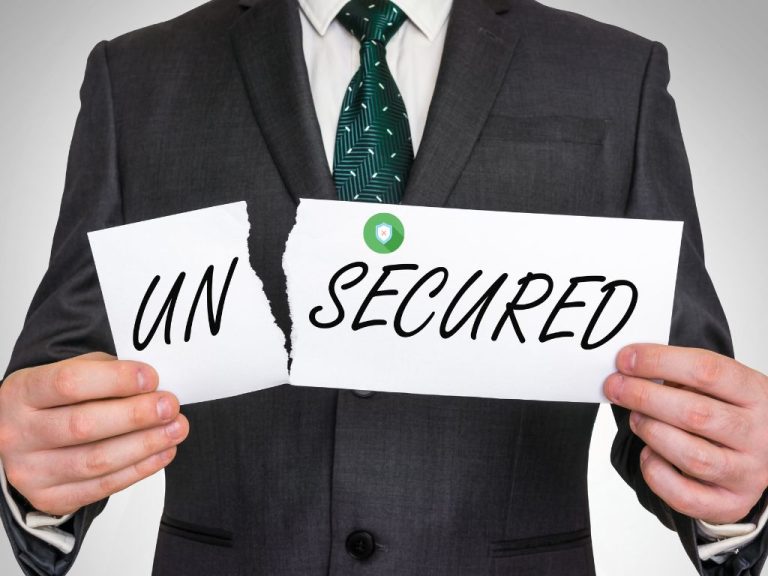
What Are Unsecured Loans?
An unsecured loan is a type of credit you can get without pledging any personal asset, no house, no car, no savings account as backup.
Instead, lenders decide whether to approve your loan based on your credit history, income stability, and debt-to-income (DTI) ratio.
Because there’s no collateral, the lender is taking a bigger risk. To offset that, interest rates are usually higher and approval standards tighter than with secured loans. In simple terms: the stronger your credit profile, the cheaper your loan.
In 2025, unsecured loans are more accessible than ever thanks to fintech and AI-driven underwriting.
According to TransUnion’s 2025 Consumer Credit Outlook, over 62% of personal loans issued online were unsecured, a sharp increase from 2022.
Online lenders can now evaluate applications in minutes using alternative data things like cash-flow consistency or gig-income stability, not just credit scores. That means more borrowers with limited credit history can qualify for fair-rate loans.
Common uses include:
- Debt consolidation: Combine high-interest credit cards into one predictable payment.
- Major purchases: Home projects, weddings, travel, or medical expenses.
- Small-business financing: Cover short-term cash flow or expansion without risking personal assets.
- Emergency costs: Fast funds when you can’t wait for traditional approval.
💡 Expert insight: Unsecured loans are best viewed as “credit-based trust agreements.” You’re borrowing the lender’s confidence in your ability to repay, not the value of what you own.
📊 Unsecured Loans vs. Secured Loans: What’s the Real Difference in 2025?
Both unsecured and secured loans can help you borrow money, but the key difference comes down to what’s at stake if you can’t repay. Here’s how they compare in 2025:
| Feature | Unsecured Loans | Secured Loans |
|---|---|---|
| Collateral Required | ❌ None — approval based on credit and income | ✅ Yes — backed by an asset (e.g., home, car, savings) |
| Approval Factors | Credit score, income, debt-to-income ratio, repayment history | Credit score, asset value, income stability |
| Typical Interest Rates (2025) | 6% – 25%+ | 4% – 12% |
| Loan Amount Range | $1,000 – $100,000 (depending on credit) | $5,000 – $500,000+ (depending on collateral) |
| Risk to Borrower | No asset loss, but credit score damage if defaulted | Risk of losing the pledged collateral |
| Funding Speed | Faster approval (1–3 days via online lenders) | Slower (asset appraisal often required) |
| Common Uses | Personal loans, credit cards, lines of credit, business loans | Auto loans, mortgages, home equity loans |
| Best For | Borrowers with strong credit or limited assets | Borrowers comfortable using property to secure lower rates |
🔓 Unsecured loans offer faster access and no asset risk but come with higher interest rates for borrowers with fair or poor credit.
🔒Secured loans provide lower APRs and larger borrowing limits, but defaulting could mean losing your collateral.
In 2025, AI-driven lending is narrowing the gap some fintech lenders now offer unsecured personal loans with near–secured loan rates for top-tier borrowers (720+ credit).
⚖️ Quick Tip: If you have excellent credit and need funds quickly, unsecured loans are faster. If you’re rebuilding credit or borrowing a larger sum, a secured loan can save you thousands in interest.
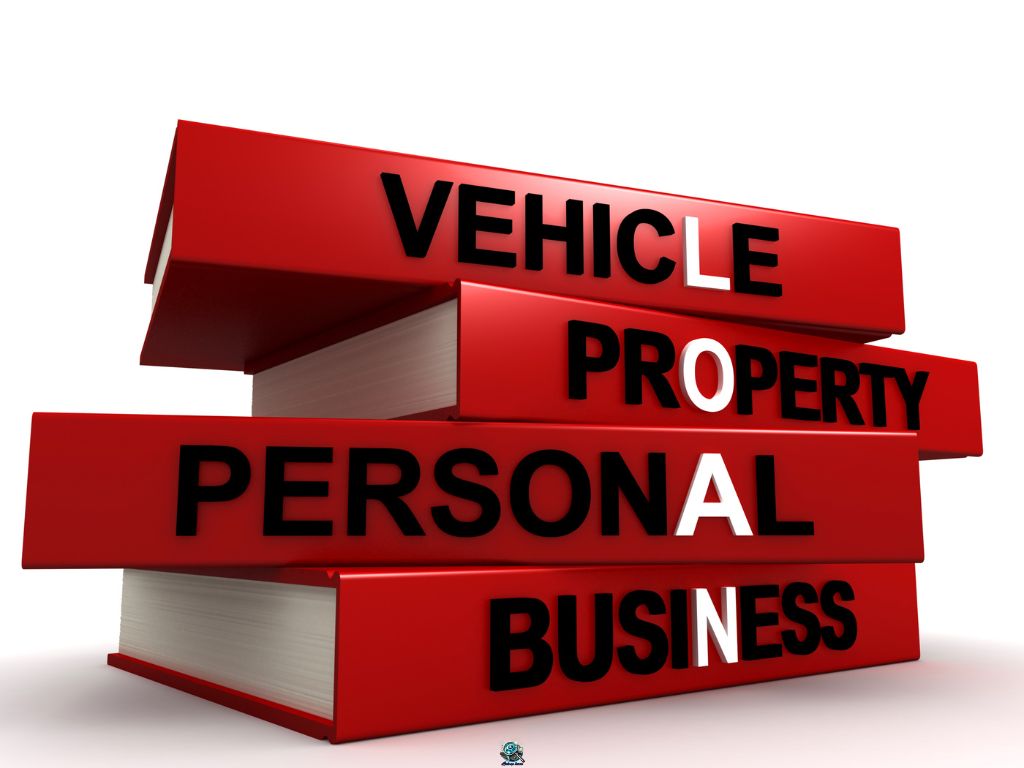
Types of Unsecured Loans (and When They Make Sense)
Unsecured loans come in several forms, each designed for a specific borrowing need. While they all share one defining trait, no collateral they differ in purpose, cost, and structure.
Understanding these distinctions helps you choose the right option for your financial situation and avoid unnecessary risk.
1. Unsecured Personal Loans
Unsecured personal loans are the most common type of unsecured financing. They provide a lump sum of money that you repay in fixed monthly installments, typically over 12 to 84 months. Because there’s no collateral involved, lenders rely on your credit profile, income stability, and debt-to-income ratio when deciding your eligibility and rate.
Personal loans have become increasingly accessible thanks to online lenders and AI-driven underwriting systems that can evaluate applications in minutes. Fintech platforms such as SoFi, Upgrade, and Upstart now allow prequalification with only a soft credit check giving borrowers the ability to compare rates without affecting their credit score.
Common uses include:
- Consolidating high-interest credit card balances
- Financing home improvements or renovations
- Covering medical or emergency expenses
- Funding large purchases or milestone events
Typical interest rates range from 6% to 25%, depending on credit score, income, and lender policies. Borrowers with excellent credit and a strong repayment history will generally qualify for the lowest rates and most flexible terms.
Expert Tip: Compare the Annual Percentage Rate (APR), not just the interest rate. APR reflects the total borrowing cost, including origination and administrative fees.
2. Unsecured Business Loans
Unsecured business loans allow entrepreneurs and small-business owners to access funds without pledging personal or company assets. Instead, lenders evaluate the business’s credit profile, annual revenue, and operational history.
These loans are commonly used for:
- Managing short-term cash flow
- Purchasing inventory or equipment
- Expanding operations or launching marketing campaigns
The business lending landscape is far more competitive today than even a few years ago. Online lenders and fintech platforms have replaced much of the traditional bank loan process, offering same-day approvals and greater flexibility for startups, freelancers, and gig-based businesses.
Interest rates can range from 8% to 35%, depending on credit, revenue consistency, and time in business. While these rates are typically higher than secured options, the speed and simplicity often outweigh the trade-off for many business owners.
Important Note: Most lenders still require a minimum of six months in operation and at least $50,000 in annual revenue. Newer or lower-revenue businesses may need to explore secured or alternative funding options.
3. Credit Cards
Credit cards are the most familiar form of unsecured borrowing. Rather than receiving a lump sum, you access a revolving line of credit that can be used, repaid, and reused up to a preset limit.
They’re ideal for everyday purchases, recurring bills, or short-term borrowing, but not for carrying long-term debt. Unlike personal loans, credit cards have variable rates and no fixed repayment schedule.
Average APRs currently range from 20% to 29%, depending on credit tier. Many issuers now use real-time data analytics to adjust credit limits dynamically, rewarding responsible users with higher limits and better offers over time.
If you tend to carry a balance, consider applying for a 0% introductory APR credit card. These promotional cards often provide interest-free payments for 12 to 18 months useful for short-term debt consolidation or large purchases you can pay off quickly.
4. Payday Loans
Payday loans are short-term, high-cost loans designed to cover immediate expenses until your next paycheck. They’re easy to obtain, often requiring only proof of income but come with extremely high costs.
Typical APRs exceed 300%, making payday loans one of the most expensive credit products available. Many borrowers fall into a cycle of debt when they roll over or renew these loans.
Although some states have imposed stricter rate caps and consumer protections, online payday lenders continue to operate across state lines. These lenders frequently market “no credit check” loans, which can quickly become financially damaging.
A payday loan should be viewed as a last resort only to be used when safer alternatives, such as credit union loans, employer cash advances, or Buy Now, Pay Later (BNPL) plans, aren’t available.
5. Personal Lines of Credit
A personal line of credit (PLOC) combines features of a credit card and a personal loan. You’re approved for a fixed credit limit but only draw funds when needed, paying interest solely on what you use.
This flexibility makes a PLOC ideal for managing variable expenses like freelance income gaps, ongoing home projects, or seasonal business fluctuations. Interest rates are generally lower than credit cards, offering a balance between convenience and cost control.
Typical APRs range from 8% to 20%, and many online banks now allow income verification through bank statements rather than traditional pay stubs, an advantage for gig workers and self-employed borrowers.
Strategic Tip: Use your line of credit intentionally. It’s best suited for planned or temporary cash-flow needs, not routine spending.
Summary: Matching the Right Loan to the Right Goal
Each unsecured loan type serves a specific purpose:
- Personal loans are best for one-time expenses and predictable payments.
- Business loans help fund operations or growth without risking assets.
- Credit cards fit smaller, ongoing purchases and reward-driven spending.
- Payday loans carry serious risk and should be avoided unless absolutely necessary.
- Personal lines of credit work best for ongoing or unpredictable cash needs.
The right borrowing choice aligns with your financial goal, credit profile, and ability to repay. Borrowing can be a powerful tool for progress when done strategically.
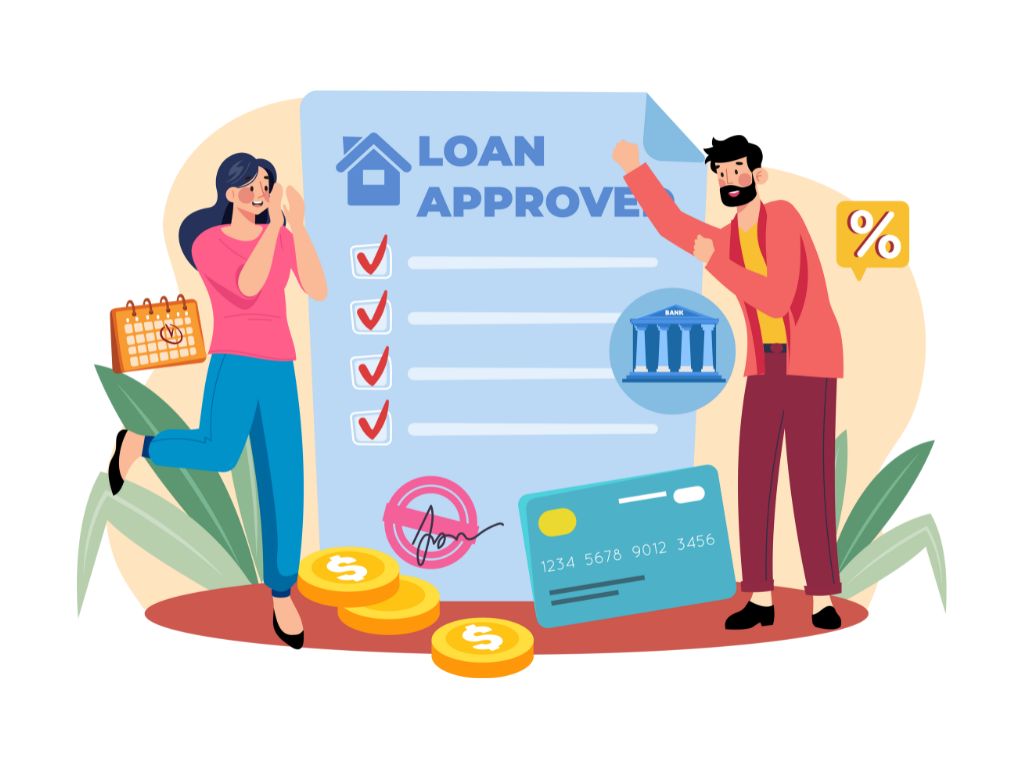
How Unsecured Loans Work
Unsecured loans are built on credit trust not collateral. You don’t pledge your car, your home, or your savings to get approved.
Instead, lenders make decisions based on your credit history, income stability, and debt-to-income ratio (DTI).
Because there’s no collateral to reclaim if you default, lenders take on higher risk. That risk is priced into your rate, meaning borrowers with strong credit pay less, while weaker profiles pay more or face tighter limits.
But there’s good news: in 2025, the process is faster, fairer, and more data-driven than ever.
Modern lenders, especially fintech companies, are using AI-powered underwriting that looks beyond your credit score.
They now assess things like income consistency, transaction patterns, and even spending behavior all to better gauge reliability.
This new model has opened the door for borrowers who once struggled to qualify through traditional banks.
The Modern Unsecured Loan Process
While details vary by lender, most unsecured loans follow a predictable structure from quick prequalification to steady repayment.
1. Prequalification (Your First Glimpse)
You start by checking potential offers through a soft credit inquiry meaning no impact on your score.
Within seconds, most online lenders display estimated rates, loan amounts, and terms.
This step helps you see your options side by side before you commit.
It’s like window-shopping for money quick, risk-free, and smart.
2. Formal Application
Once you find an offer that fits, you’ll complete a full application.
Expect to provide:
- Proof of income (pay stubs, bank statements, or tax forms)
- Employment verification
- Government-issued ID
- Possibly a list of existing debts or monthly obligations
Lenders use this to confirm your repayment ability and verify that your income is consistent enough to handle the new payment.
3. Credit and Risk Evaluation
Here’s where technology steps in. Lenders now blend traditional credit checks with AI risk modeling.
They still look at your FICO score, payment history, and DTI but many also analyze real-time factors such as:
- Your average account balance over time
- Monthly cash flow stability
- Rent and utility payment history
For borrowers with thin or limited credit files, this broader analysis can make all the difference.
4. Offer and Terms
If approved, the lender sends a detailed offer showing:
- Approved loan amount
- Annual Percentage Rate (APR)
- Term length and monthly payment
- Any upfront fees (like origination charges)
At this stage, comparing offers from multiple lenders can save you thousands over the life of the loan even a 2% APR difference matters.
5. Funding and Disbursement
Once you accept an offer, funds are deposited directly into your account sometimes within hours, usually within 1–5 business days.
Online lenders tend to move fastest; banks and credit unions may take longer due to manual verification steps.
6. Repayment
Repayment happens through fixed monthly installments that cover both principal and interest.
Terms usually range from 12 to 84 months, depending on loan size and credit profile.
Setting up automatic payments (autopay) can lower your rate slightly and help avoid missed payments.
Paying early often saves on interest but always check if the lender charges a prepayment fee.
7. Credit Impact
Every on-time payment builds a positive credit history. Missed payments, on the other hand, can hurt your score quickly and may lead to collection activity after several months of nonpayment.
Borrowers who repay consistently tend to see noticeable credit improvements within 6–12 months especially those consolidating high-interest debt.
Bottom Line: Unsecured loans work because they balance trust and data. The lender trusts your financial record instead of collateral, and you gain flexibility and faster access to funds in return. The better your credit and cash-flow health, the cheaper and smoother your experience will be.
Before applying, make sure your financial picture tells the story you want lenders to see clean, consistent, and responsible.
According to the CFPB, many complaints stem from misunderstandings around repayment schedules, fees, and prepayment terms, another reason to read the Truth-in-Lending disclosures carefully before signing (CFPB).

Unsecured Loan Interest Rates, Terms, and Costs
Once you understand how unsecured loans work, the next step is knowing how lenders decide what borrowing will actually cost you.
Because these loans aren’t backed by collateral, pricing depends almost entirely on creditworthiness, income stability, and perceived risk.
In plain terms: the better your credit profile, the cheaper your loan. But in 2025, the story is more nuanced: lenders aren’t just looking at your score anymore. They’re reading your financial behavior.
What Determines Your Interest Rate
Modern underwriting combines several core factors.
Each one influences how risky you appear to the lender and how much interest you’ll pay.
- Credit Score & History: Your credit score is still the single biggest factor. Borrowers with excellent credit (720+) qualify for the lowest APRs, while scores below 640 often push rates into the high-20% range. But lenders now look beyond the number, they examine your payment patterns, total debt, and length of credit history.
- Debt-to-Income Ratio (DTI): This compares how much debt you carry against your monthly income. A DTI under 36% is ideal; above 45% can trigger higher rates or denial. The lower the ratio, the more confidence lenders have in your repayment ability.
- Income & Job Stability: Consistent employment or predictable cash flow signals lower risk. Even freelancers and gig workers are seeing better access thanks to AI tools that verify income through digital statements instead of traditional pay stubs.
- Loan Term & Amount: Shorter loans cost less overall not because the rate is lower, but because interest has less time to build up. Longer loans bring smaller monthly payments but increase your total cost over time.
- Lender Type & Technology: Traditional banks tend to favor conservative profiles with excellent credit. Fintech lenders, by contrast, use AI-based models that factor in real-time cash flow, rent payments, or account balances allowing more flexible approvals.
📊 Typical Interest Rate Ranges
| Credit Tier | Estimated APR Range | Typical Term |
|---|---|---|
| Excellent (720+) | 6% – 12% | 12 – 84 months |
| Good (680–719) | 10% – 18% | 12 – 60 months |
| Fair (640–679) | 15% – 25% | 12 – 48 months |
| Poor (below 640) | 25%+ or denial | 6 – 36 months |
Rates vary widely across lenders, so it’s always wise to prequalify with multiple providers before submitting a full application. Even a 2% rate difference can translate into hundreds or even thousands of dollars saved over the life of the loan.
APR vs. Interest Rate Why They’re Not the Same
Your interest rate reflects the cost of borrowing the principal. Your APR (Annual Percentage Rate) shows the total cost, including lender fees such as origination or administrative charges.
APR is the number that really matters. It gives a fair, apples-to-apples comparison across lenders especially if some include upfront fees and others don’t.
When comparing loans, always line up APRs, not just advertised rates.
💰 Common Fees and Hidden Costs
| Fee Type | Typical Cost | Why It Matters |
|---|---|---|
| Origination Fee | 1% – 8% | Reduces your actual loan proceeds. Some lenders deduct it upfront. |
| Late Payment Fee | $25 – $50 | Applies if you miss or delay a payment. |
| Prepayment Penalty | Varies | Charged for paying off early — check terms carefully. |
| Returned Payment Fee | $15 – $40 | Triggered when your payment fails due to insufficient funds. |
Some online lenders advertise “no fees”, which can be appealing — but always verify that this means no hidden charges, rather than simply no origination fees. Understanding these costs upfront helps you compare loans on true total cost, not just rate.
Real-World Example
Let’s say you borrow $10,000 for 3 years (36 months):
- At 8% APR, your monthly payment is around $313, with roughly $1,268 in total interest.
- At 18% APR, that same loan costs about $362 per month totaling $3,028 in interest.
That 10-point jump adds almost $1,800 to the cost. This is why improving your credit or comparing multiple offers can have an outsized payoff.
How to Lower Your Loan Costs
A few small strategic moves can make a major difference:
- Raise your credit score before applying (reduce utilization, pay on time).
- Prequalify with multiple lenders to find the best rate without a hard inquiry.
- Choose a shorter term if you can handle the higher monthly payment.
- Set up autopay to get small rate discounts and avoid missed payments.
- Decline optional add-ons like loan insurance or “payment protection plans” that inflate your total cost.
Bottom Line: Unsecured loan pricing is all about risk and reward the lender’s risk, your reward.
By improving your credit, lowering debt ratios, and comparing APRs instead of just rates, you can significantly reduce what you pay over time.
Borrow strategically, not impulsively. A few hours of preparation before applying can save you thousands once the loan is funded.
Banking regulators and major rate trackers agree: APR not the nominal rate is the clearest single number for comparing total loan cost across lenders (Federal Reserve; OCC; widely used consumer rate indexes).
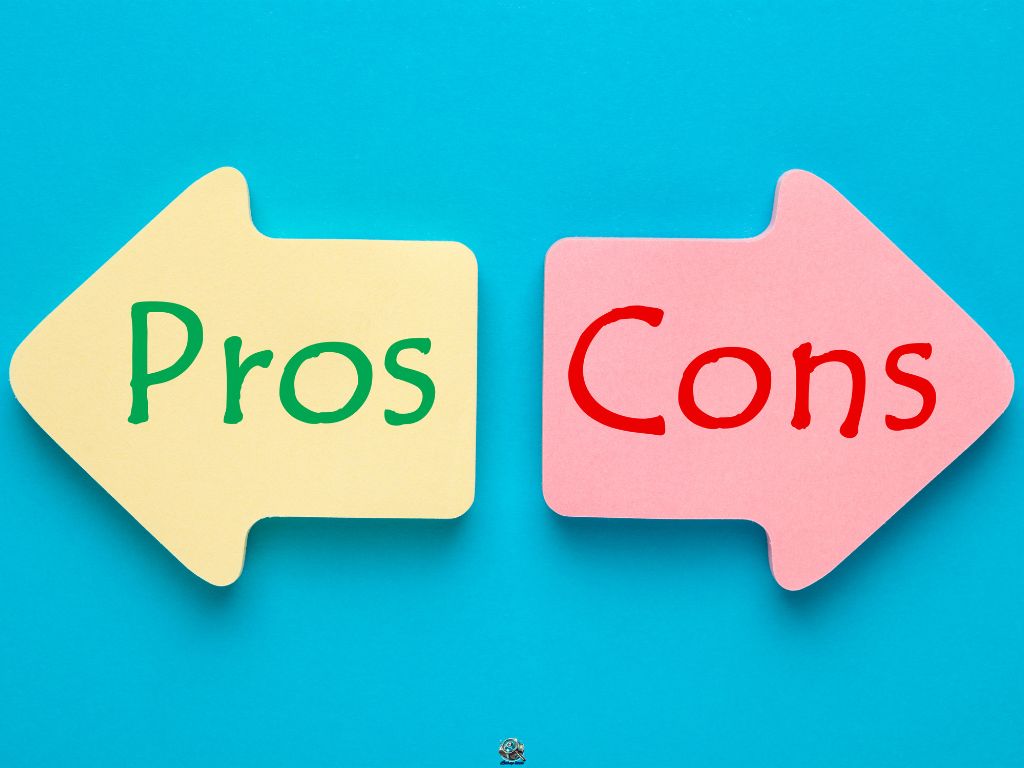
Pros and Cons of Unsecured Loans
Unsecured loans can be an effective financial tool, offering flexibility and fast access to cash without putting your property on the line.
However, they also come with potential downsides especially if your credit or finances aren’t in strong shape.
Understanding both sides will help you decide whether this type of loan fits your goals and risk tolerance.
The Advantages of Unsecured Loans
1. No Collateral Required
Perhaps the biggest benefit of unsecured loans is that they don’t require collateral. You won’t need to pledge your car, home, or savings to secure approval. This makes them an attractive option for people who don’t own major assets or prefer not to risk them.
2. Fast and Convenient Application Process
Online lenders and fintech platforms have streamlined unsecured lending. In many cases, you can apply, get approved, and receive funds within one to three business days. Some digital lenders even offer same-day disbursement for qualified borrowers.
3. Fixed Payments and Predictable Terms
Most unsecured personal loans have fixed interest rates and monthly payments. This stability makes budgeting easier and gives you a clear payoff timeline unlike credit cards, which often have variable rates and revolving balances.
4. Versatile Use Cases
Unsecured loans can be used for almost any purpose: consolidating debt, funding home projects, covering medical costs, or even launching a small business. That flexibility gives borrowers control over how to best use the funds.
5. Credit-Building Opportunity
When managed responsibly, unsecured loans can help improve your credit score. On-time payments demonstrate reliability to lenders and contribute positively to your credit mix.
The Drawbacks of Unsecured Loans
1. Higher Interest Rates
Because these loans lack collateral, lenders take on more risk and that risk is priced into your rate. Borrowers with fair or poor credit may see APRs exceeding 25%, significantly increasing the cost of borrowing.
2. Stricter Approval Requirements
Strong credit, stable income, and low debt levels are often required to qualify for the best rates. Applicants with inconsistent income or high debt-to-income ratios may find it harder to get approved or may be offered less favorable terms.
3. Smaller Loan Amounts
Unsecured loans typically cap at $50,000–$100,000, depending on the lender and borrower profile. For larger financing needs like major renovations or business expansions a secured loan may be more appropriate.
4. Potential Impact on Credit
While timely payments can build your score, missed or late payments can quickly damage it. Defaults may be sent to collections, leading to long-term credit consequences that affect future borrowing.
5. Fees and Fine Print
Some lenders charge origination fees, late payment penalties, or prepayment fees that can quietly increase the total loan cost. Always review the full disclosure statement before signing any loan agreement.
Summary Comparison
| Factor | Pros | Cons |
|---|---|---|
| Collateral | No asset risk — you keep full ownership of your property | None offered, so lenders charge higher interest |
| Interest Rates | Competitive for good credit borrowers | High for fair or poor credit borrowers |
| Loan Amounts | Flexible — $1,000 to $100,000+ | Lower limits compared to secured loans |
| Approval Speed | Fast — often within 1–3 days | Can still require strict verification |
| Credit Impact | Builds credit with on-time payments | Late or missed payments can hurt credit |
| Flexibility | Funds usable for nearly any purpose | Overspending or misuse can lead to debt cycles |
When an Unsecured Loan Makes Sense
Unsecured loans are best suited for borrowers who:
- Have a credit score above 670 and a stable income
- Need funds quickly for specific, one-time expenses
- Prefer fixed payments and predictable payoff timelines
- Don’t want to put property at risk
If you fit those criteria, an unsecured loan can be a smart, controlled way to manage short-term financing needs. However, if your credit is still developing or you have significant existing debt, consider credit-building products, secured loans, or credit union alternatives with more lenient terms.
Bottom Line: Unsecured loans offer speed, flexibility, and independence, but those benefits come at a price typically higher interest rates and tighter qualification standards.
They work best for financially disciplined borrowers who plan ahead, understand the true cost of borrowing, and repay on time.
If you approach borrowing strategically, an unsecured loan can strengthen your financial position, not weaken it.
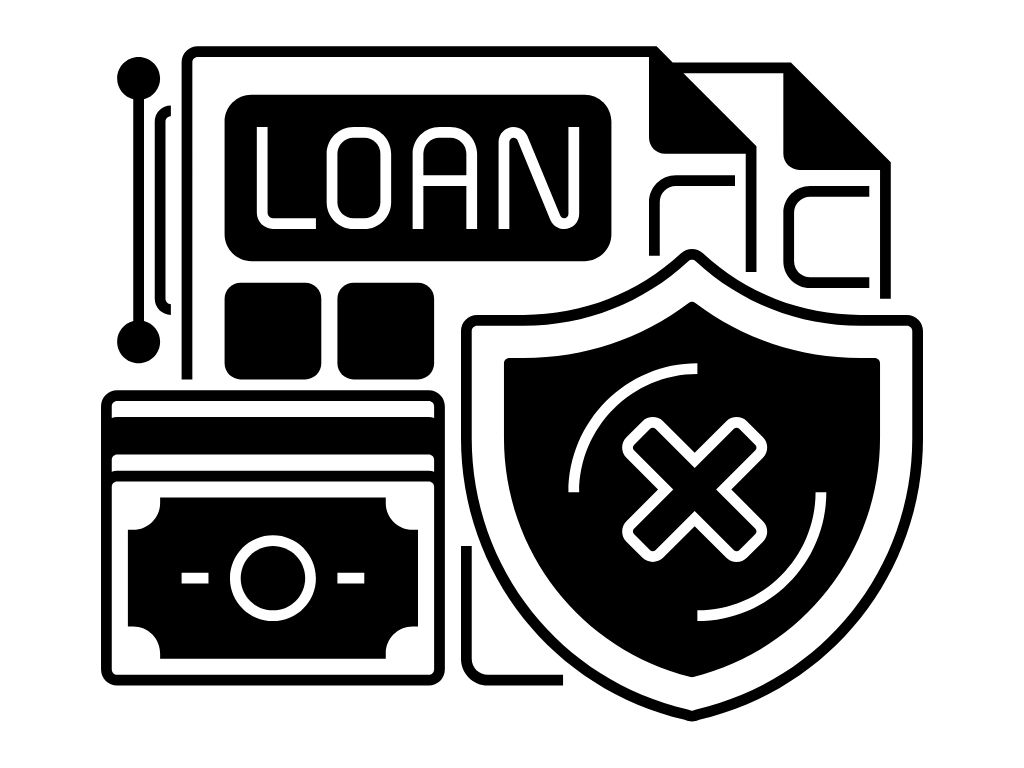
Unsecured Loan Repayment and Default Risks
Getting approved is only half the story; the real test begins once repayment starts.
Unsecured loans are simple in structure but demand consistency. Because there’s no collateral, missed payments don’t cost you property, but they can still create long-lasting credit damage and financial stress.
How Repayment Works
Repayment is structured around fixed monthly installments that include both principal and interest.
The lender sets the amount, due date, and term length upfront (usually 12 to 84 months).
Payments are most often made automatically through bank transfers or ACH, which helps borrowers stay current.
Many lenders even offer rate discounts (0.25%–0.50%) for enrolling in autopay.
If you want to pay off early, check for prepayment penalties some lenders charge extra, though most online providers now waive those fees.
Tip: Paying early or adding small extra amounts toward the principal can save hundreds in long-term interest.
What Happens If You Miss Payments
Missing or skipping payments can trigger several cascading effects:
- Credit Score Impact: Payment history is the single largest factor in your credit score. Even one late payment can lower your score noticeably; a default (90+ days overdue) can stay on your credit report for up to seven years.
- Collection Activity: If your loan goes unpaid for too long, it’s typically transferred to a collection agency. At that point, expect calls, emails, and formal collection letters. Some lenders may even pursue legal action, potentially resulting in judgments or wage garnishment.
- Future Borrowing Limits: Defaults make future approvals harder and more expensive. Lenders interpret missed payments as a higher risk profile, often resulting in higher rates or smaller offers later on.
- Financial Stress: Beyond the numbers, financial strain can create emotional pressure. Borrowers often avoid communication out of fear but in practice, proactive contact with your lender almost always improves your options.
How to Avoid Default
Default isn’t inevitable; most borrowers who get behind can recover with early action.
Here’s how to stay ahead of trouble:
- Automate payments so you never miss a due date.
- Build a loan-specific budget that includes a small emergency buffer.
- Contact your lender early if you anticipate problems, many offer hardship plans or payment deferrals.
- Focus on high-interest debt first when juggling multiple loans.
- Maintain an emergency fund (even one month’s payment can make a difference).
If You’ve Already Fallen Behind
If you’ve missed payments, don’t wait, recovery depends on timing.
- Call the Lender Immediately: Explain your situation honestly. Most lenders prefer a modified payment plan over a default.
- Explore Debt Consolidation or Refinancing: If your credit is still intact, a new loan with a lower APR can simplify payments and reduce total cost.
- Seek Help from Credit Counseling Services: Nonprofit agencies can negotiate lower interest or create a Debt Management Plan (DMP) to structure repayment more affordably.
- Avoid “Quick Fix” Loans: Payday or “no credit check” loans often worsen financial strain with triple-digit APRs and harsh repayment cycles.
The Importance of Communication and Transparency
The worst mistake is silence. Lenders view early communication as a sign of responsibility, not weakness.
By being upfront before payments are missed, you’ll often find more flexibility from payment pauses to temporary interest reductions.
Financial hardship happens. What defines your credit future is how quickly you respond.
Bottom Line: Defaulting on an unsecured loan won’t cost you your car or home, but it can seriously damage your credit profile, borrowing power, and financial confidence.
The best protection is prevention: automate payments, budget intentionally, and communicate early.
Borrowing responsibly doesn’t end when funds arrive, it continues until the final payment clears. Consistency is the quiet engine that builds both credit and credibility.
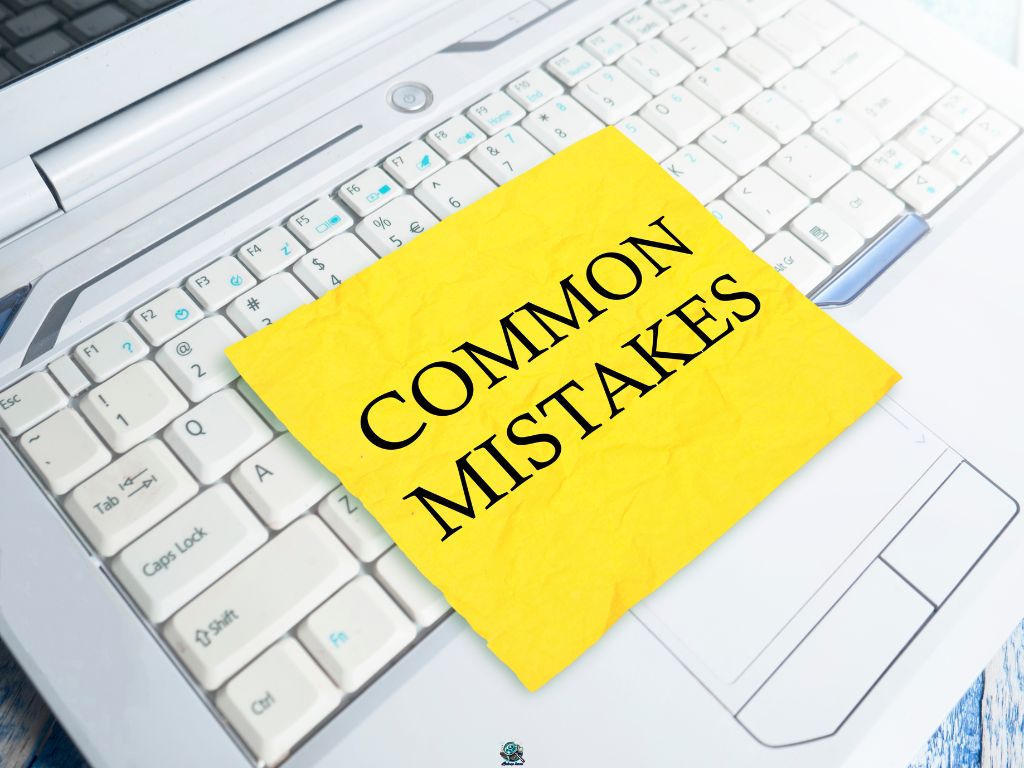
Common Mistakes to Avoid with Unsecured Loans
Unsecured loans can be a smart and flexible way to manage finances but when handled poorly, they can quickly become expensive or damaging.
Most borrower mistakes come down to rushing the process, overlooking details, or misunderstanding true loan costs.
Avoiding these common pitfalls can save you money, stress, and potential credit damage.
1. Ignoring the APR (Not Just the Interest Rate)
A low interest rate doesn’t always mean a good deal. Lenders often include fees such as origination or processing costs that inflate the Annual Percentage Rate (APR) the true cost of borrowing.
Two loans might share the same interest rate but differ by hundreds of dollars in total cost once fees are factored in.
Always compare APR to APR, not just interest rates, to understand which offer is actually cheaper.
2. Using Loans for Everyday Spending
Unsecured loans are best for specific, one-time needs like consolidating debt, covering medical bills, or handling emergencies.
Using them to fund daily expenses such as groceries, entertainment, or travel is a warning sign that you’re patching a lifestyle gap with debt.
Once borrowing becomes routine, it’s easy to lose track of what you owe and end up in a cycle of repayments that outpace income.
3. Choosing the Longest Repayment Term by Default
Longer repayment terms lower your monthly payments, but they also increase the total interest paid over time.
For example, a $10,000 loan at 12% interest costs roughly $1,950 in interest over three years but over seven years, that same loan costs nearly $4,800.
Lower monthly payments may look appealing upfront, but they can double your total cost if stretched too far.
4. Overlooking the Fine Print
Every lender structures their fees differently. Some charge for paying off your loan early; others add optional “protection” products that raise costs.
Neglecting to read the fine print can lead to surprises like prepayment penalties or required insurance add-ons.
It’s also smart to confirm whether the lender reports to all three credit bureaus; if not, your responsible payments might not boost your credit score at all.
5. Borrowing More Than You Actually Need
Many borrowers accept the maximum loan amount offered simply because it’s available.
But taking on unnecessary debt increases both your repayment burden and your debt-to-income ratio, which can hurt your credit and limit future borrowing. Just because you’re approved for $20,000 doesn’t mean you should borrow it.
6. Failing to Shop Around for Lenders
Interest rates and fees vary dramatically between lenders sometimes by as much as 10 percentage points.
Prequalifying with multiple lenders (a soft credit check that doesn’t affect your score) can reveal much better deals.
Borrowers who compare offers often save hundreds or even thousands of dollars over the life of the loan.
7. Ignoring Safer Alternatives
If your credit is weak or approval seems uncertain, avoid payday or “no credit check” loans that advertise instant approvals.
These products often come with triple-digit APRs and aggressive repayment terms.
Safer options include credit union personal loans, secured loans, or even Buy Now, Pay Later plans with 0% interest for short periods.
8. Missing Early Warning Signs of Financial Stress
Most defaults don’t happen overnight, they build gradually.
If you’re relying on one loan to pay another, or your budget feels stretched even before a new payment hits, that’s a sign to pause and reassess.
Reaching out to lenders early often opens doors to hardship programs or payment adjustments before real damage occurs.
Bottom Line: Most mistakes with unsecured loans happen when borrowers rush into agreements without understanding the full terms or long-term implications.
The smartest approach is simple: take your time, compare multiple offers, borrow only what you need, and read every detail before committing.
A well-managed unsecured loan can improve your financial flexibility but misused, it can set you back for years. The difference lies in preparation and patience.
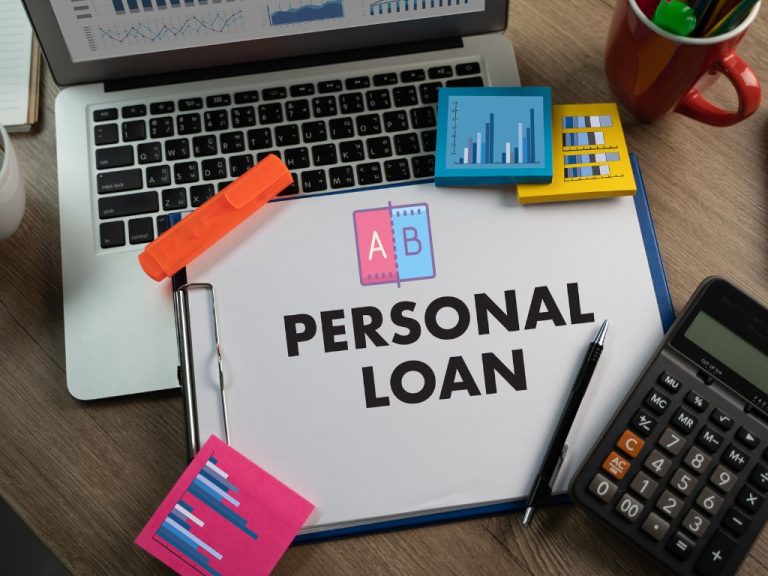
Best Unsecured Loan Lenders in 2025
Choosing the right lender can make a major difference in how affordable and stress-free your borrowing experience is.
Interest rates, approval requirements, and funding speed vary widely across providers and the best choice depends on your credit profile, loan amount, and purpose.
While traditional banks remain reliable, online lenders have become the preferred option for most borrowers thanks to faster approval, easier qualification, and transparent digital processes.
Below is a comparison of some of the leading unsecured loan lenders available in 2025.
Top Unsecured Loan Lenders (2025)
| Lender | Loan Amounts | APR Range | Minimum Credit Score | Best For |
|---|---|---|---|---|
| LightStream | $5,000 – $100,000 | 6.99% – 24.99% | 660+ | Large loan amounts with excellent credit |
| SoFi | $5,000 – $100,000 | 7.99% – 23.43% | 680+ | Low rates for strong credit and member perks |
| Upgrade | $1,000 – $50,000 | 8.49% – 35.99% | 560+ | Flexible terms and bad-credit borrowers |
| Best Egg | $2,000 – $50,000 | 8.99% – 35.99% | 600+ | Debt consolidation and mid-tier credit |
| LendingClub | $1,000 – $40,000 | 7.99% – 35.99% | 600+ | Peer-to-peer lending with joint applications |
| Upstart | $1,000 – $50,000 | 6.70% – 35.99% | 580+ | Fast approvals using AI-driven credit models |
| Wells Fargo | $3,000 – $100,000 | 7.49% – 23.74% | 660+ | Existing bank customers seeking larger loans |
Data reflects publicly available rates as of Q1 2025. Actual offers vary by state and borrower profile.

How to Choose the Best Lender for Your Needs
The best lender for you depends on what you value most: speed, low rates, flexibility, or customer support.
Here’s what to consider before applying:
1. Interest Rates and APR
Always compare APR, not just the advertised rate. The APR includes all fees and represents the true cost of borrowing.
2. Credit Requirements
Some lenders, like Upstart or Upgrade, consider factors beyond credit scores (education, job history, cash flow). Others, like SoFi and LightStream, focus heavily on excellent credit.
3. Repayment Terms
Check how long you can spread payments. Longer terms reduce your monthly cost but increase total interest.
If you’re confident in stable income, shorter terms save more money overall.
4. Loan Amounts
If you need a large sum (over $50,000), lenders like LightStream or Wells Fargo are better options. For smaller, quick loans, Upstart or Upgrade tend to be faster and more flexible.
5. Funding Speed
Online lenders usually provide faster turnaround times sometimes within 24 hours after approval. Traditional banks may take several days.
6. Fees and Transparency
Review loan disclosures for origination fees, prepayment penalties, or late fees. Transparent lenders clearly list these before you apply.
Fastest Approval Options
If you need funds urgently, a few lenders specialize in same-day or next-day deposits:
- Upstart: Funding as soon as one business day after approval.
- Upgrade: Instant prequalification, with most loans funded within 24 hours.
- LendingClub: Peer-to-peer model can fund within 1–3 days depending on investor demand.
Just remember faster isn’t always cheaper. Always weigh speed vs. cost before accepting a loan.
Which Lenders Work Best for Each Borrower Type
| Borrower Profile | Best Option(s) | Why |
|---|---|---|
| Excellent Credit (720+) | LightStream, SoFi | Lowest APRs and best terms |
| Good Credit (680–719) | Wells Fargo, Best Egg | Competitive rates, flexible repayment |
| Fair Credit (640–679) | Upgrade, LendingClub | Mid-tier options with manageable terms |
| Poor Credit (<640) | Upstart | AI-based approval for limited credit histories |
| Fast Funding Needs | Upgrade, Upstart | Quick disbursement and online simplicity |
| Large Loan Needs | LightStream, Wells Fargo | Higher borrowing limits and longer terms |
Each lender shines for a different borrower type. If speed or flexibility matters more than rate, fintech options like Upgrade or Upstart fit best. For high-credit borrowers seeking large loans or top-tier rates, traditional lenders such as LightStream and SoFi remain hard to beat.
Pro Tips for Comparing Lenders
- Prequalify first: This lets you view estimated rates without hurting your credit score.
- Beware of “guaranteed approval” claims: Legitimate lenders always evaluate credit and income.
- Use comparison tools: Online loan marketplaces can save time by showing multiple offers at once.
- Check customer reviews: A low rate means little if customer service or transparency is poor.
Bottom Line: The best unsecured loan lender is the one that balances affordability, reliability, and convenience for your unique financial situation.
Borrowers with strong credit have access to the lowest rates, while those rebuilding credit can still find fair options through AI-driven lenders like Upstart or Upgrade.
Before you apply, compare at least three offers side by side, read all terms carefully, and never rush into a loan just because it promises fast funding.
A few extra minutes of comparison can save you thousands over the life of your loan.
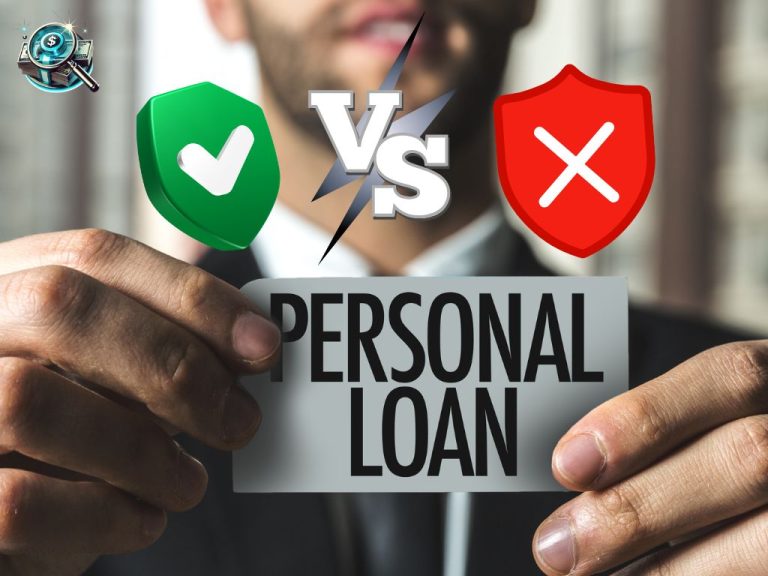
Unsecured Loans vs. Other Borrowing Options
Before choosing an unsecured loan, it’s important to understand how it stacks up against other forms of borrowing.
Each financing type has its own structure, risks, and ideal use case and the right choice depends on your credit profile, financial stability, and goals.
Unsecured loans work best when you want predictable payments and no collateral risk, but they aren’t always the cheapest or most flexible option.
Unsecured Loans vs. Credit Cards
Both options offer borrowing without collateral, but they function very differently.
| Feature | Unsecured Personal Loan | Credit Card |
|---|---|---|
| Loan Structure | Fixed term and payments | Revolving balance |
| Interest Type | Usually fixed | Variable |
| Best For | Large, one-time expenses | Ongoing or smaller purchases |
| Repayment Term | Defined end date | Open-ended, minimum monthly payment |
| Typical APR | 6% – 25% | 20% – 29% (average) |
Credit cards offer flexibility but can become expensive if balances are carried month-to-month. Unsecured loans, on the other hand, provide structure and predictability — ideal for borrowers who prefer a fixed payoff schedule.
When to Choose an Unsecured Loan:
- You need a set amount of money for a single purpose (like debt consolidation).
- You prefer a fixed payment schedule with a clear end date.
- You want to avoid variable rates and revolving debt.
Unsecured Loans vs. Personal Lines of Credit
A personal line of credit (PLOC) blends elements of both loans and credit cards. You’re approved for a credit limit and can draw funds as needed, paying interest only on what you use.
| Feature | Unsecured Loan | Personal Line of Credit |
|---|---|---|
| Structure | Lump sum | Flexible draw limit |
| Interest | Fixed | Variable |
| Payments | Fixed schedule | Varies with balance |
| Use Case | One-time borrowing | Ongoing or fluctuating expenses |
| Access to Funds | Single disbursement | Reusable over time |
A PLOC is useful for those with unpredictable expenses — such as freelancers or small business owners. However, the flexibility can tempt overspending and complicate budgeting if not used carefully.
Unsecured Loans vs. Buy Now, Pay Later (BNPL) Plans
Buy Now, Pay Later services like Affirm, Klarna, or Afterpay offer short-term financing for purchases, often with zero interest promotions.
While convenient, BNPL loans are best for smaller purchases and short repayment windows.
Unlike traditional loans, they don’t build credit unless reported to bureaus, and missing payments can still incur fees or damage your score.
When to choose an unsecured loan:
- You need higher amounts or longer repayment periods.
- You want predictable, structured repayment that builds credit over time.
Bottom Line: Unsecured loans occupy the middle ground between flexibility and structure.
They’re more affordable than credit cards, less risky than secured loans, and more predictable than revolving credit.
If you have solid credit, stable income, and a clear borrowing purpose, an unsecured loan can offer the best balance of convenience and control.
But if your needs are small, short-term, or uncertain, alternatives like lines of credit or BNPL may be more practical.
The key is to match the loan type to your goal, not just the rate to your budget.
Conclusion
Unsecured loans remain one of the most accessible and flexible financing options for borrowers in 2025.
They’re ideal for people who want to borrow without risking their assets whether that’s funding a project, consolidating debt, or managing an unexpected expense.
But with that convenience comes higher responsibility. Because unsecured loans don’t rely on collateral, lenders base decisions entirely on your credit strength, income stability, and debt-to-income ratio.
Those with strong financial profiles get the best rates and terms, while others may face higher costs or stricter limits.
The key is to approach borrowing with clarity and strategy:
- Define your purpose before applying.
- Compare offers from multiple lenders.
- Focus on APR, not just the interest rate.
- Understand every fee, term, and repayment detail.
If your credit isn’t ideal, take time to strengthen it before borrowing. Even a small improvement in your score can lower your rate and save you hundreds in interest.
Ultimately, an unsecured loan should simplify your finances, not complicate them.
Borrow only what you need, repay consistently, and treat debt as a temporary tool not a lifestyle. That’s how you turn financing into forward progress instead of financial pressure.

FAQs About Unsecured Loans
What are the risks of taking an unsecured loan?
The main risk is cost. Unsecured loans have higher interest rates because there’s no collateral for the lender to claim if you default. Missing payments can damage your credit score and make future borrowing more expensive.
Can I get an unsecured loan with bad credit?
Yes but your options will be limited, and your rates will likely be higher. Some lenders, like Upstart or Upgrade, specialize in working with borrowers who have fair or rebuilding credit. You may also need a co-signer or consider a secured or credit union loan for better terms.
How can I improve my chances of getting approved?
Focus on your credit score, income stability, and debt-to-income ratio. Pay down revolving balances, make on-time payments for a few months, and check your credit report for errors. Prequalifying with multiple lenders can also help you find who’s most likely to approve you.
What are the best uses for an unsecured personal loan?
They’re best for specific, one-time expenses such as debt consolidation, medical costs, home improvements, or emergency repairs. Avoid using them for daily living expenses or discretionary spending, which can lead to long-term debt.
How fast can I get funds from an unsecured loan?
Online lenders often provide same-day or next-day funding once approved. Traditional banks can take three to seven business days, depending on documentation. Speed shouldn’t be your only factor; fast loans with high APRs can cost much more over time.
Do unsecured loans help build credit?
Yes as long as you make payments on time. A well-managed loan adds positive history to your credit mix, which can raise your score. However, missed or late payments will have the opposite effect.
What’s the maximum I can borrow with an unsecured loan?
It depends on the lender and your credit profile. Most lenders cap amounts between $50,000 and $100,000, though borrowers with excellent credit and high income may qualify for more.
Are online lenders safe?
Yes, as long as they’re licensed and transparent. Stick to reputable names SoFi, LightStream, Upgrade, Upstart, or recognized banks. Avoid any site that promises “guaranteed approval” or requires upfront payment.
Can I refinance or consolidate debt with an unsecured loan?
Absolutely. Many borrowers use unsecured loans for debt consolidation to combine high-interest balances into one fixed monthly payment often at a lower rate. This can simplify repayment and save money, as long as you avoid adding new debt afterward.
What happens if I default on an unsecured loan?
Default won’t result in losing property, but it can severely damage your credit. Lenders may send your account to collections or pursue legal action. The best move is to contact your lender early if you’re struggling they may offer payment extensions or hardship programs.



3 Comments
Auto Loans for Bad Credit: Your Guide to Approval - Look Up Loans · March 15, 2025 at 11:15 pm
[…] Next, check out our Unsecured Loans Guide. […]
Best Unsecured Personal Loans for Bad Credit in 2025 - Look Up Loans · March 16, 2025 at 3:58 am
[…] more about unsecured loans and how they work in our comprehensive […]
Unsecured Loans for Bad Credit: What Are Your Best Options? - Look Up Loans · March 17, 2025 at 2:04 am
[…] you’re unsure which loan is best for you, consider reading our Unsecured Loans Guide for a more in-depth look at how these loans work and how to make the best financial […]